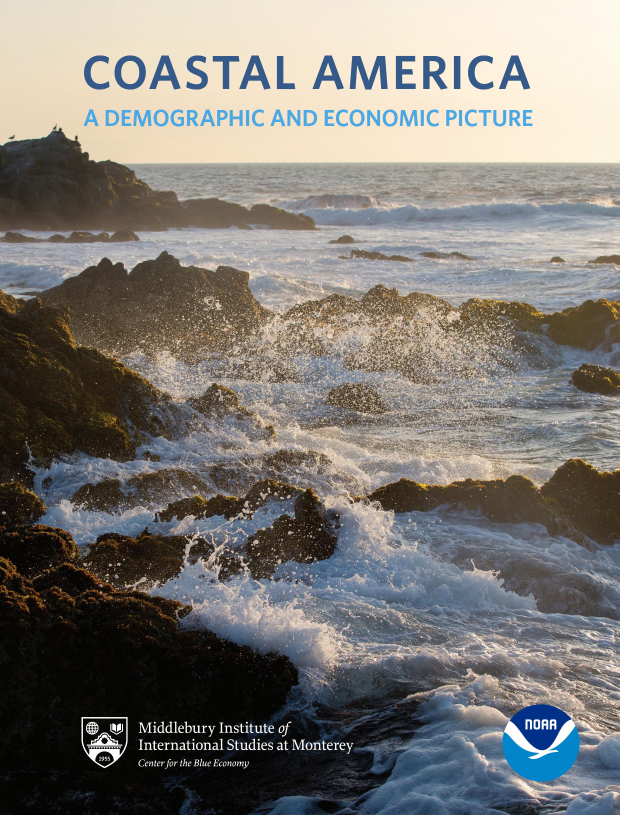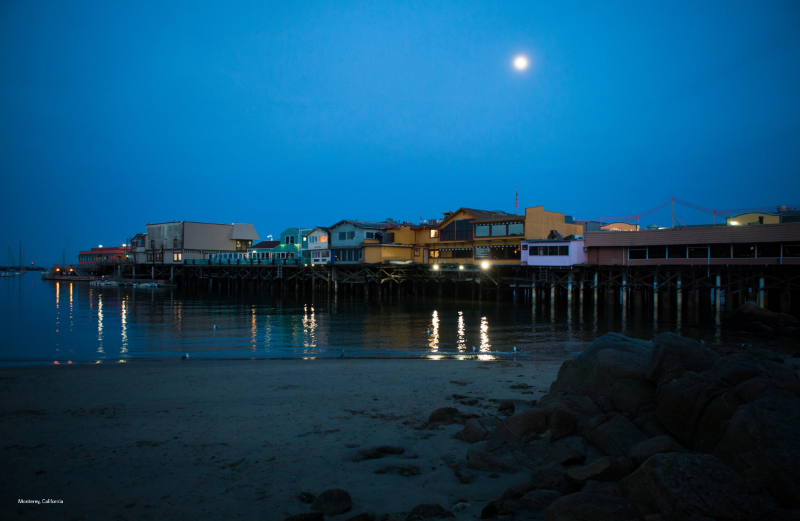Coastal America: A Demographic and Economic Picture

A new report by the Center for the Blue Economy with funding support from NOAA finds coastal America accounts for over one-third of both GDP and employment.
Coastal America is a place of astonishing variety: From the Arctic to the Caribbean, from the Canadian to the Mexican border, and from the shores of the Atlantic and the Pacific extending past Hawaii to the island territories.
Coastal America is home to 131 million people, or nearly 1 in 3 Americans, on only 17% of the land mass of the U.S. There are twice as many people per square mile in coastal America. 4 in 10 Americans are employed in coastal counties, 53 million jobs, contributing a total of $7 trillion to the national economy. Coastal America accounts for 34% of total U.S. GDP and 37% of total U.S. employment.
The evolving population and economic characteristics of Coastal America are explored in a new report by the Center for the Blue Economy at the Middlebury Institute of International Studies at Monterey.

“America’s coasts offer beautiful landscapes and great recreation, and have always been key to population and economic change in America. But growth on the coast is slowing because of high housing prices and an older population. Tracking the evolution of the economy of the coast is more and more important in the face increasing frequency and severity of weather events.”
This report tracks data from 2010 through 2022, capturing post-pandemic trends in the 30 states bordering the ocean and the Great Lakes. The “coast” refers to the 452 coastal counties that intersect with the NOAA-designated shorelines of the Atlantic, Pacific, Gulf of America and Great Lakes. It also includes the Pacific territories of American Samoa, Guam, the Northern Mariana Islands, the Caribbean, U.S. Virgin Islands and shoreline-adjacent municipios of Puerto Rico. Key findings include:
- In 2022 over 131 million people live on the coast, 31% of the total U.S. population
- In 2022 there were 53 million jobs in coastal counties, 37% of total U.S. employment
- Coastal counties accounted for $7.01 trillion, or 34% of total U.S. GDP
Weather related hazards have always been present along coastal America, but climate change has greatly expanded both the geography and magnitude of risk. The report shows that many residential properties are at risk for flooding, with greatest risk in the Southeastern and Gulf states—but no coastal county is entirely without risk.
Jobs are also at risk, especially in California and the Mid-Atlantic area: the counties with the highest risk to employment contain over 60,000 jobs.

“This report offers the first comprehensive look at both the impacts of the COVID pandemic on coastal economies and the trajectory of the post-pandemic recovery. A key feature of our new report is direct access to the data underlying each of the graphs and maps in the report. This will allow users to see and analyze all the data for themselves.”
This report is intended to tell the essential story about the economy of coastal America as far as available data will allow. It is also intended to allow readers to dig deeper into the data. Each graphic is linked to a dashboard where the reader can see the data in the graphic, explore the data, and download it in a user-selected format.

The uses of the coast have become ever more intense and complex. More people live and work on the coast. More people visit the coast. The coast accounts for a larger proportion of the national economy, yet more people and property are at risk from weather-related hazards.
Understanding how people interact with the coast is fundamental to sustainable uses of coastal resources. This report provides an overview of key socioeconomic trends that will help coastal resource managers understand population, housing, employment and economic trends in coastal areas. Knowing what is at stake is key to protecting it.
For More Information
Read the Report: Coastal America: A Demographic and Economic Picture
